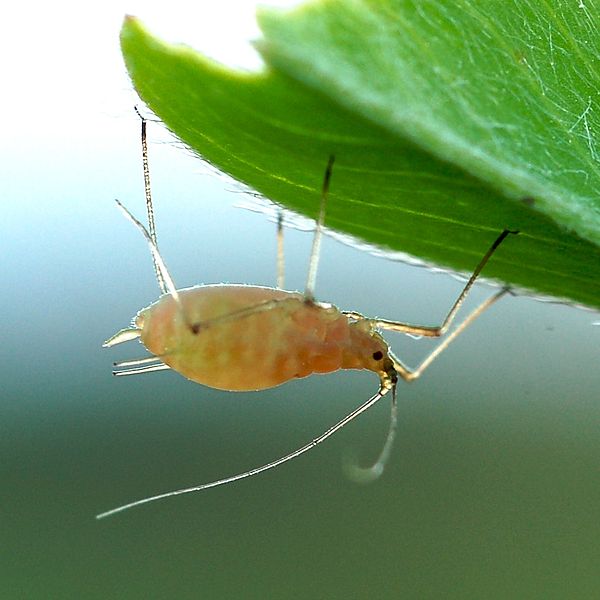Science News
Photosynthesizing Insects?
August 21, 2012

Two years ago, a group of researchers discovered that pea aphids make their own carotenoids—the building blocks of molecules crucial for vision, healthy skin, bone growth, and other key physiological functions. What’s so newsworthy about that? Well, all other animals (including insects!) get these pigments from the food they eat—plants, algae, and fungi.
Scientists understood how the aphids were making the carotenoids—a gene transfer from fungus—but not why. These pigments require a lot of energy to make, so why should pea aphids bother?
Pea aphids come in three colors—white, green, and orange, adapting for their environments. The white exist in regions with limited resources, the green inhabit cold environments; and the orange favor the best conditions. Carotenoids are responsible for body color, so a group of French researchers began their experiments by looking at the differences among these populations.
Within the color groups, the researchers found that each color group contains varying levels of ATP. ATP functions as the energy currency in organisms, sending and transferring power throughout the body, like chemical power lines. White aphids produce the least amount of ATP, green aphids produce much more, and orange aphids produce more in sunlight than in the dark.
This evidence suggests that carotenoids in orange and green aphids may potentially be involved in absorbing light and using the energy to power ATP synthesis.
Nature calls this process photosynthesis-like and Discover’s 80beats blog describes it this way:
These results are certainly suggestive, but they do not prove that carotenoids help aphids turn sunlight into usable energy.
Why do the insects photosynthesize light? Perhaps as energy back-up during tough times, the scientists say.
The study is published in the recent edition of Nature Scientific Reports.
Image: Jpeccoud/Wikipedia